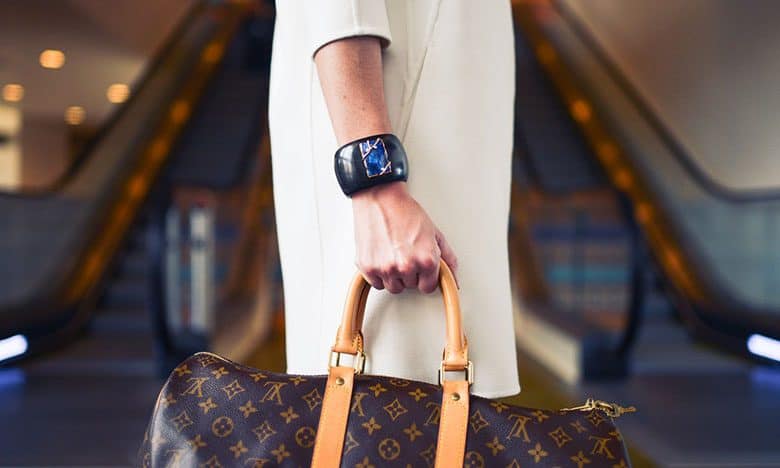A retail or a shop is a business that presents a selection of goods and offers to trade or sell them to customers for money or other goods. Shopping is an activity in which a customer browses the available goods or services presented by one or more retailers with the intent to purchase a suitable selection of them. In some contexts it may be considered a leisure activity as well as an economic one.
In modern days customer focus is more transferred towards online shopping; worldwide people order products from different regions and online retailers deliver their products to their homes, offices or wherever they want. The B2C (business to consumer) process has made it easy for consumers to select any product online from a retailer’s website and have it delivered to the consumer within no time. The consumer does not need to consume his energy by going out to the stores and saves his time and cost of travelling.
A woman shopping at a shopping mall in the United States in December 2005
The shopping experience can range from delightful to terrible, based on a variety of factors including how the customer is treated, convenience, the type of goods being purchased, and mood.
The shopping experience can also be influenced by other shoppers. For example, research from a field experiment found that male and female shoppers who were accidentally touched from behind by other shoppers left a store earlier than people who had not been touched and evaluated brands more negatively, resulting in the Accidental Interpersonal Touch effect.
According to a 2000 report, in the U.S. state of New York, women purchase 80% of all consumer goods and influence 80% of health-care decisions.
In ancient Greece, the agora served as a marketplace where merchants kept stalls or shops to sell their goods. Ancient Rome utilized a similar marketplace known as the forum. For example, there was Trajan’s Market with tabernae that served as retailing units.
Shopping lists are known to have been used by Romans, as one was discovered near Hadrian’s wall dated back to 75–125 CE written for a soldier.
Fairs and markets were established to facilitate the exchange of goods and services. People would shop for goods at a weekly market in nearby towns.
Consumer shopping
The modern phenomenon of shopping is closely linked to the emergence of the consumer society in the 18th century. Over the course of the two centuries from 1600 onwards, the purchasing power of the average Englishman steadily rose. Sugar consumption doubled in the first half of the 18th century and the availability of a wide range of luxury goods, including tea, cotton and tobacco saw a sustained increase.
Marketplaces dating back to the Middle Ages, expanded as shopping centres, such as the New Exchange, opened in 1609 by Robert Cecil in the Strand. Shops started to become important as places for Londoners to meet and socialise and became popular destinations alongside the theatre. Restoration London also saw the growth of luxury buildings as advertisements for social position with speculative architects like Nicholas Barbon and Lionel Cranfield.
Much pamphleteering of the time was devoted to justifying conspicuous consumption and private vice for luxury goods for the greater public good. This then scandalous line of thought caused great controversy with the publication of Bernard Mandeville’s influential work Fable of the Bees in 1714, in which he argued that a country’s prosperity ultimately lay in the self-interest of the consumer.
Josiah Wedgewood’s pottery, a status symbol of consumerism in the late 18th century.
These trends were vastly accelerated in the 18th century, as rising prosperity and social mobility increased the number of people with disposable income for consumption. Important shifts included the marketing of goods for individuals as opposed to items for the household, and the new status of goods as status symbols, related to changes in fashion and desired for aesthetic appeal, as opposed to just their utility. The pottery inventor and entrepreneur, Josiah Wedgewood, pioneered the use of marketing techniques to influence and manipulate the direction of the prevailing tastes.




